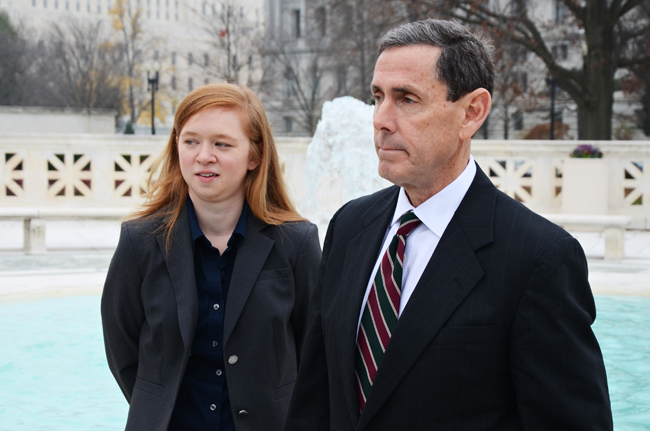Let’s Settle This in Court
March 1, 2022
In 2016, the Supreme Court ruled against Abigail Fisher, who claimed affirmative action was rejected from the University of Texas.
The wrestling over affirmative action continued after Bakke. In California, Glynn Custred, who had publicly called affirmative action a “reversed Jim Crow,” and Tom Wood, who blamed the practice for his difficulty in finding a professorship, drafted Proposition 209, which banned affirmative action in educational settings. In the 1996 referendum, about 55% of Californians voted in favor of it, establishing a ban that persists today. (Proposition 16, which would have repealed the legislation, was proposed in 2020 and failed by a similar margin with which Prop 209 passed.)
In 2003 came two Supreme Court cases that relied heavily on the precedent set by Bakke. Grutter v. Bollinger and Gratz v. Bollinger involved two separate lawsuits brought against the University of Michigan, targeting its law school and undergraduate school, respectively. Both were brought by white women who had been denied admission to the university. While the law school adhered to a loosely defined system of race-conscious admissions that used race as one of many factors when evaluating an applicant, the undergraduate school used a point system. Any applicants that passed the threshold of 100 points were admitted, and Black, Latino, Native American, and low-income applicants were automatically assigned 20 points.
The Court upheld the law school’s holistic evaluation system challenged in Grutter but struck down the undergraduate school’s point-based system challenged in Gratz, enforcing the precedent set in Bakke that while schools are allowed to consider race, strict formulaic methods were impermissible.
Four years later, the Court considered in Parents Involved in Community Schools v. Seattle School District No. 1 if school districts could use race as a “tiebreaker” when assigning students to different campuses, so as to avoid essentially segregating schools. The Court ruled that practices of “racial balancing” were unlawful.
“The way to stop discrimination on the basis of race,” wrote Justice John Roberts, in the plurality opinion, “is to stop discriminating on the basis of race.”
Another affirmative action case arrived on the steps of the Supreme Court Building six years after that. A lawsuit was being brought against the University of Texas at Austin, which had a policy guaranteeing admission to any Texas students in the top 10% of their graduating class; anyone who didn’t make the cutoff would be evaluated according to various factors, including race. Abigail Fisher, a white student in the top 12% of her class, was denied admission. She sued on the grounds that the school had violated her rights under the Equal Protection Clause.
“There were people in my class with lower grades who weren’t in all the activities I was in, who were being accepted into U.T., and the only other difference between us was the color of our skin,” she said in a Youtube video. “I was taught from the time I was a little girl that any kind of discrimination was wrong. And for an institution of higher learning to act this way makes no sense to me. What kind of example does it set for others?”
The first case in 2013 was remanded, or cycled back through the lower courts; in 2016, it made it to the Supreme Court again. In Fisher v. University of Texas, the Court ruled in a surprising 4-3 decision against Fisher, upholding the constitutionality of the University of Texas’ admissions process that considered race.
“Considerable deference is owed to a university in defining those intangible characteristics, like student body diversity, that are central to its identity and educational mission,” wrote Justice Robert Kennedy in the majority opinion.
“Even though U.T. has never provided any coherent explanation for its asserted need to discriminate on the basis of race, and even though U.T.’s position relies on a series of unsupported and noxious racial assumptions, the majority concludes that U.T. has met its heavy burden. This conclusion is remarkable—and remarkably wrong,” countered Justice Samuel Alito in a scathing dissent. “This is affirmative action gone berserk.”
